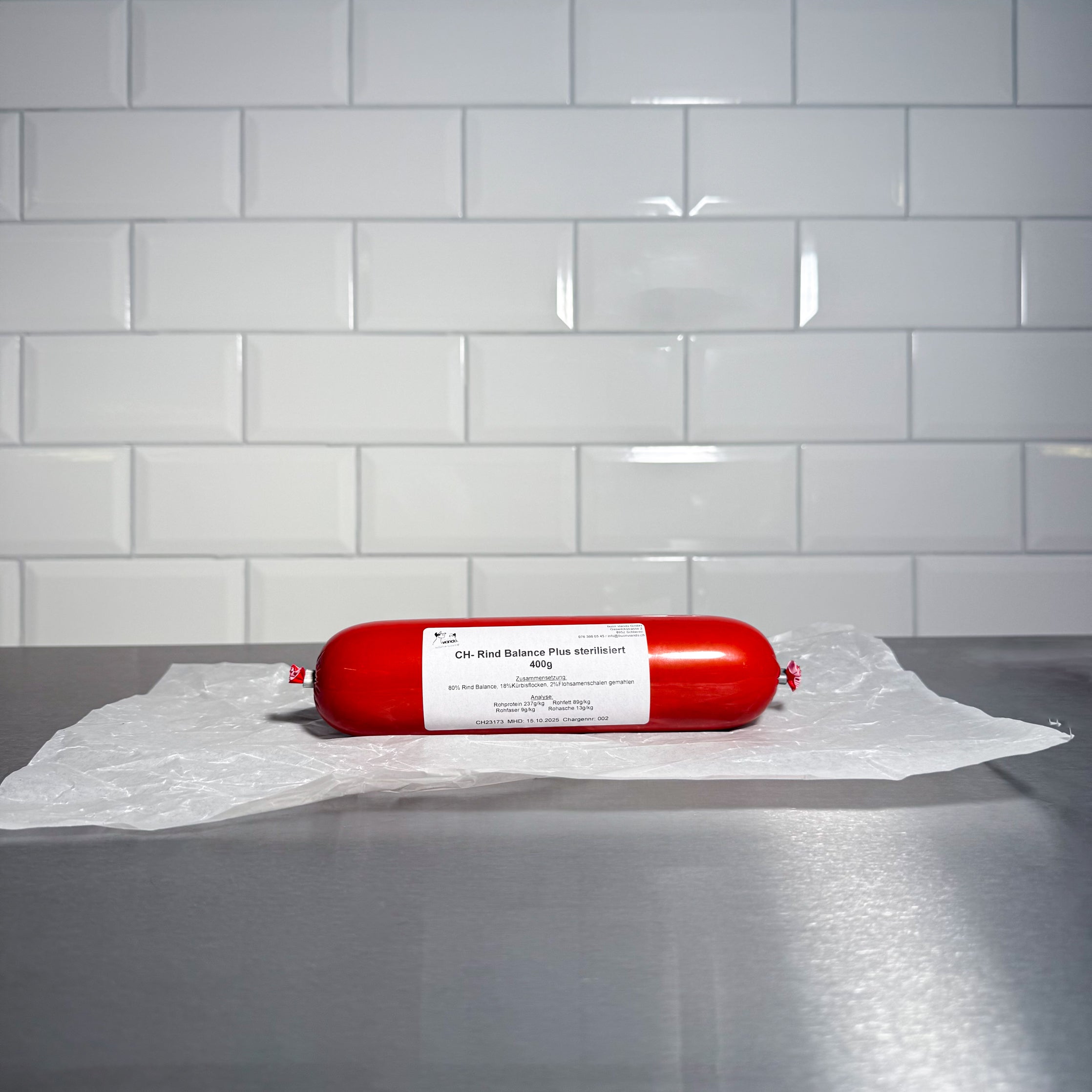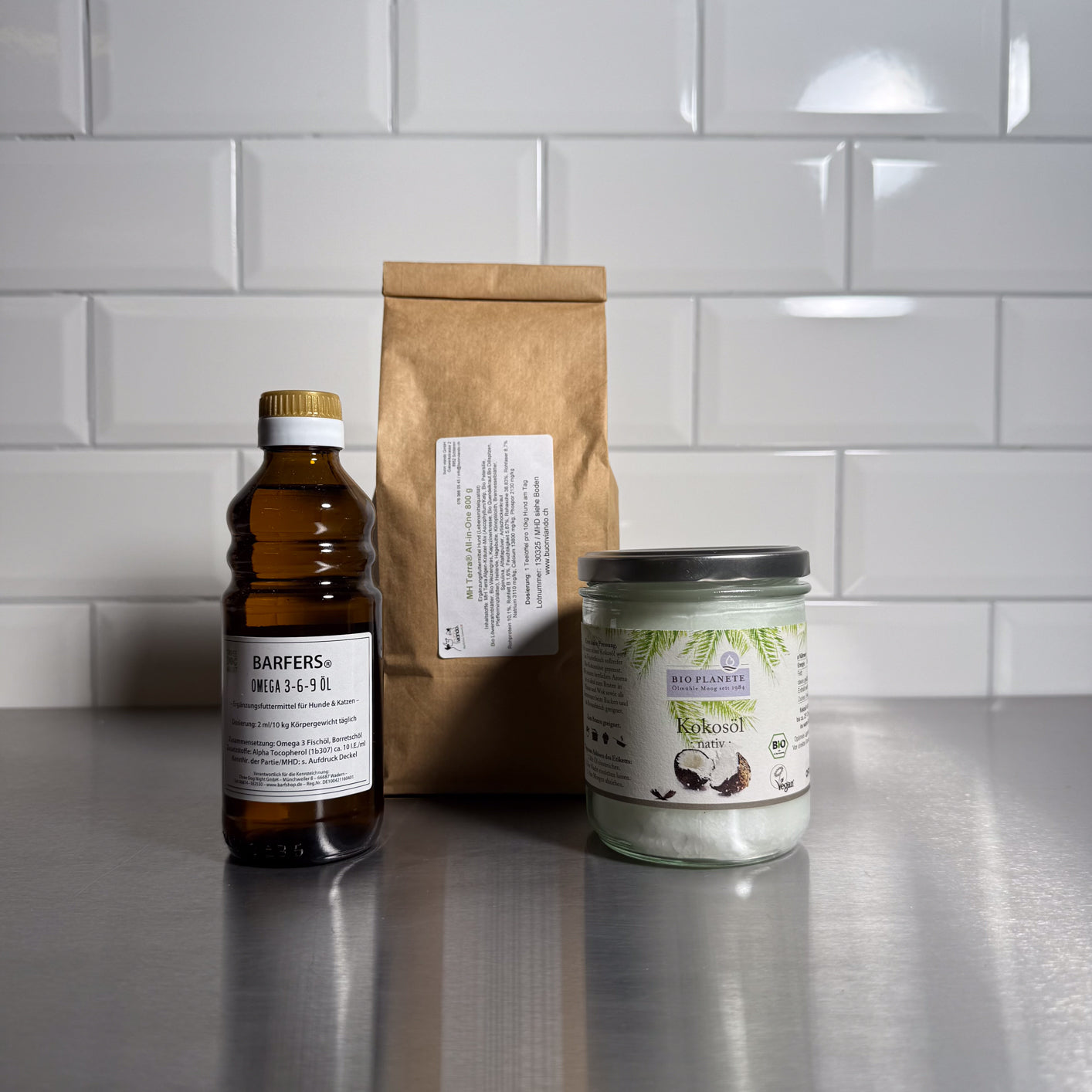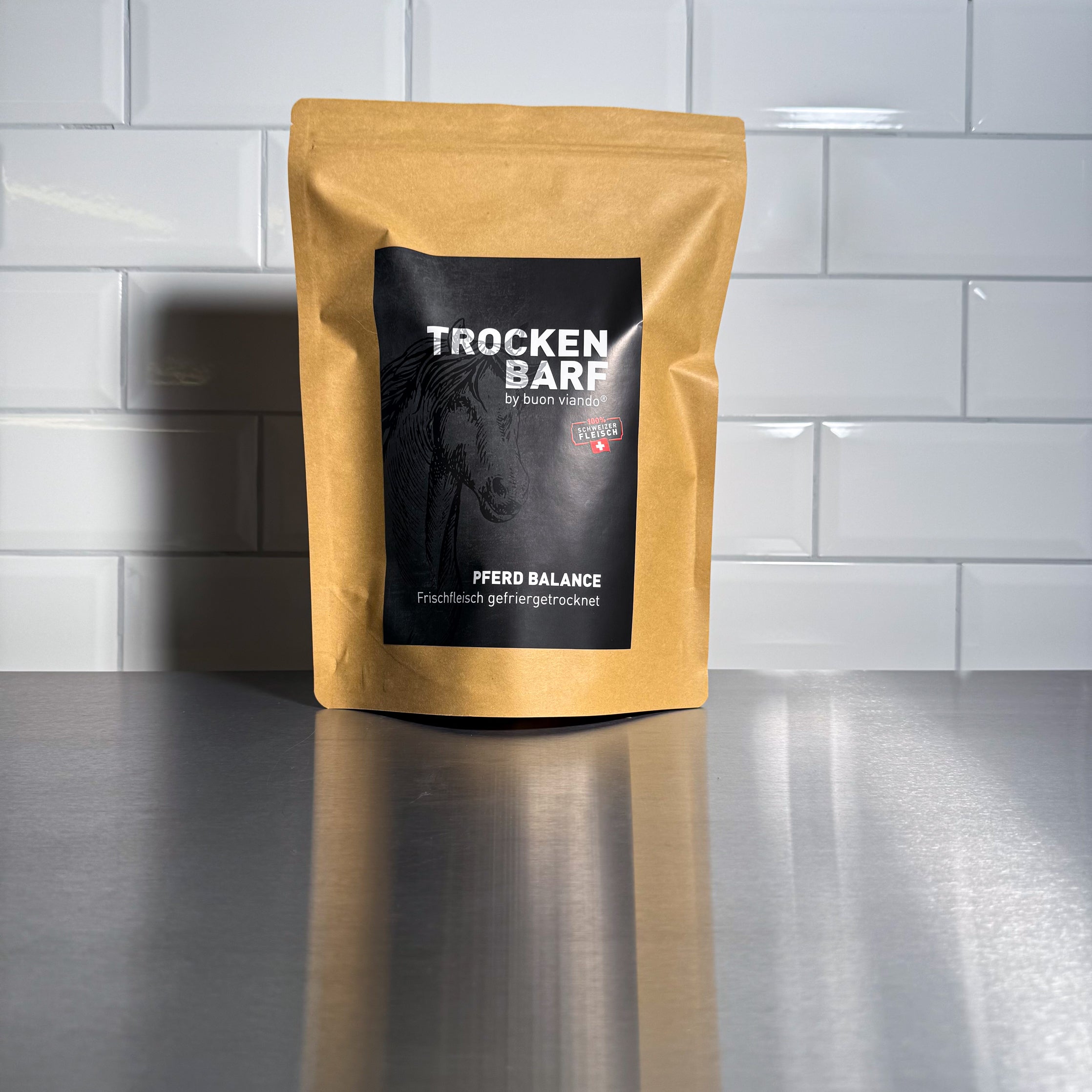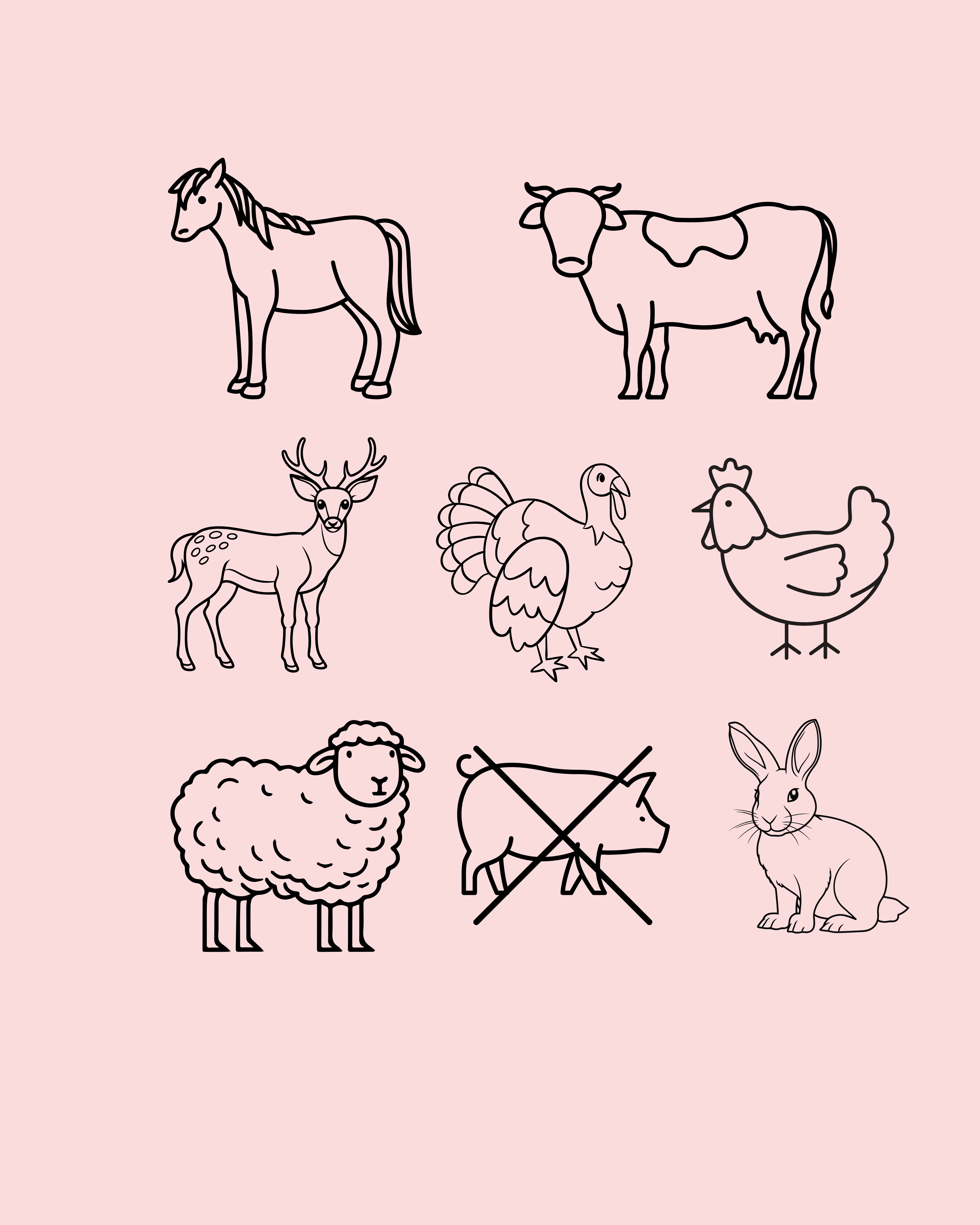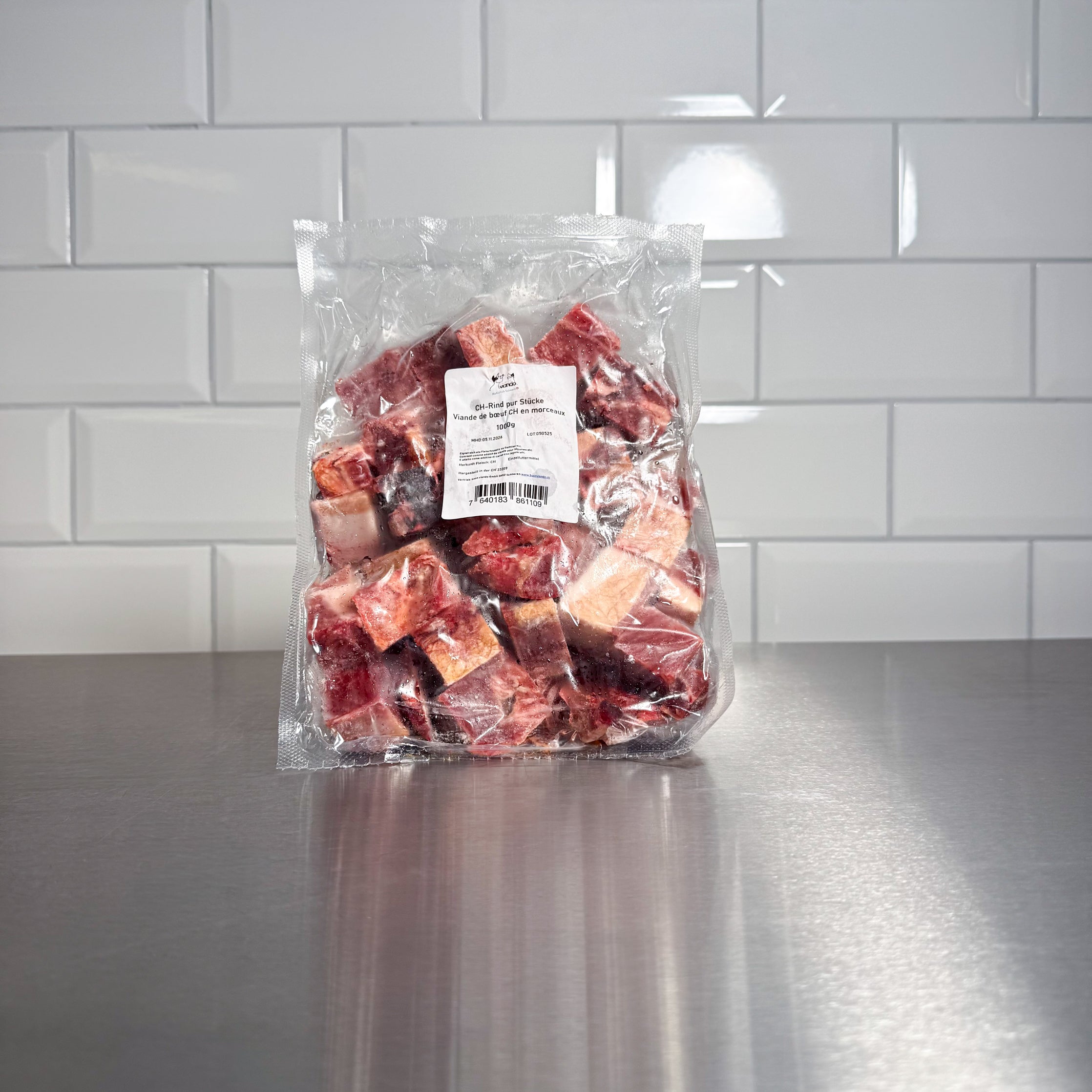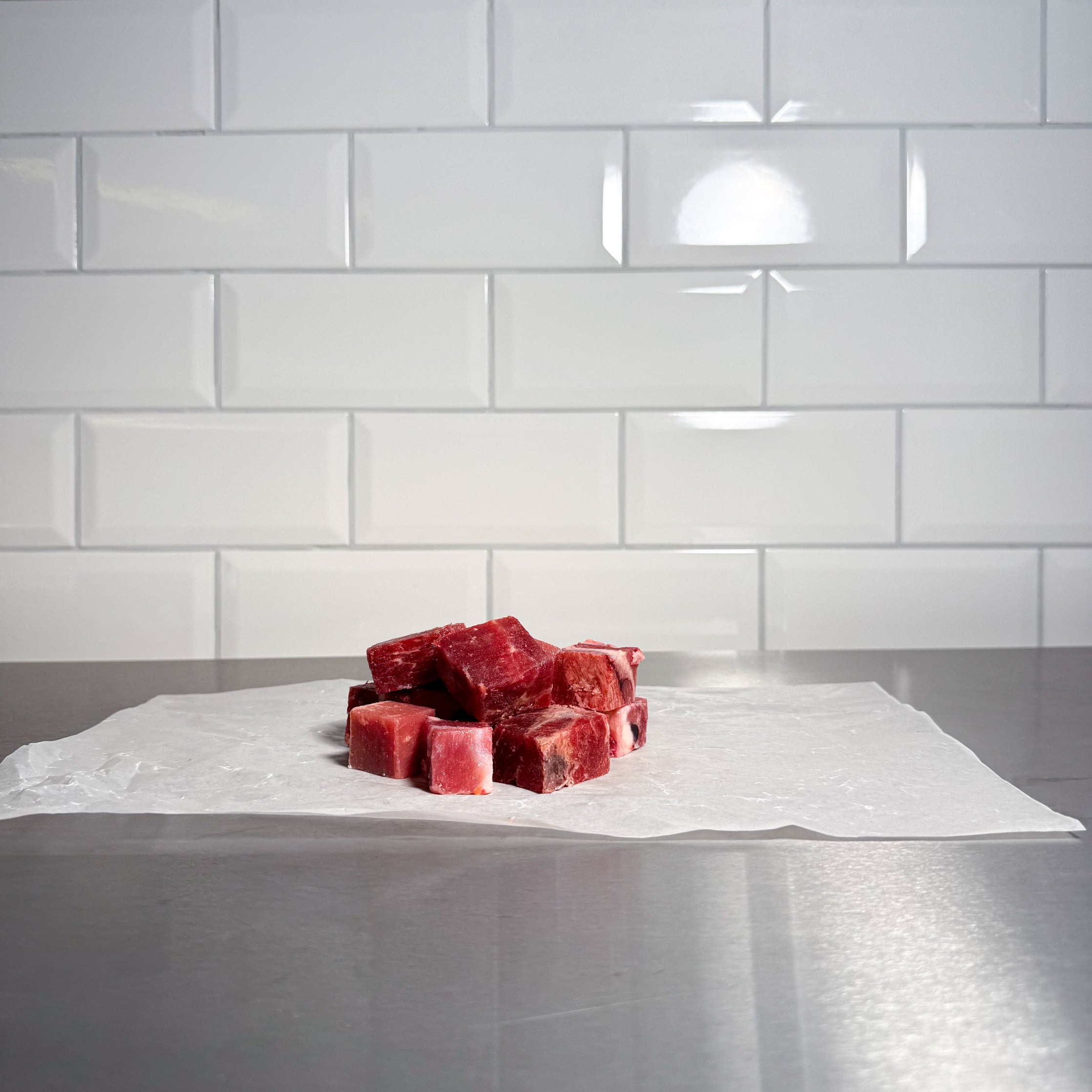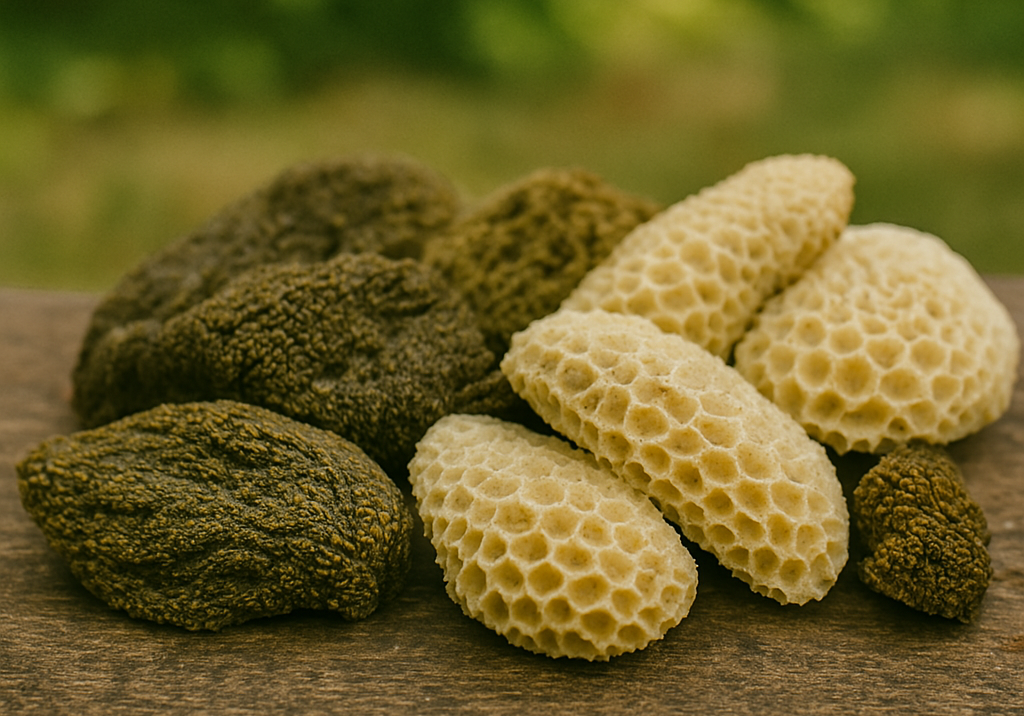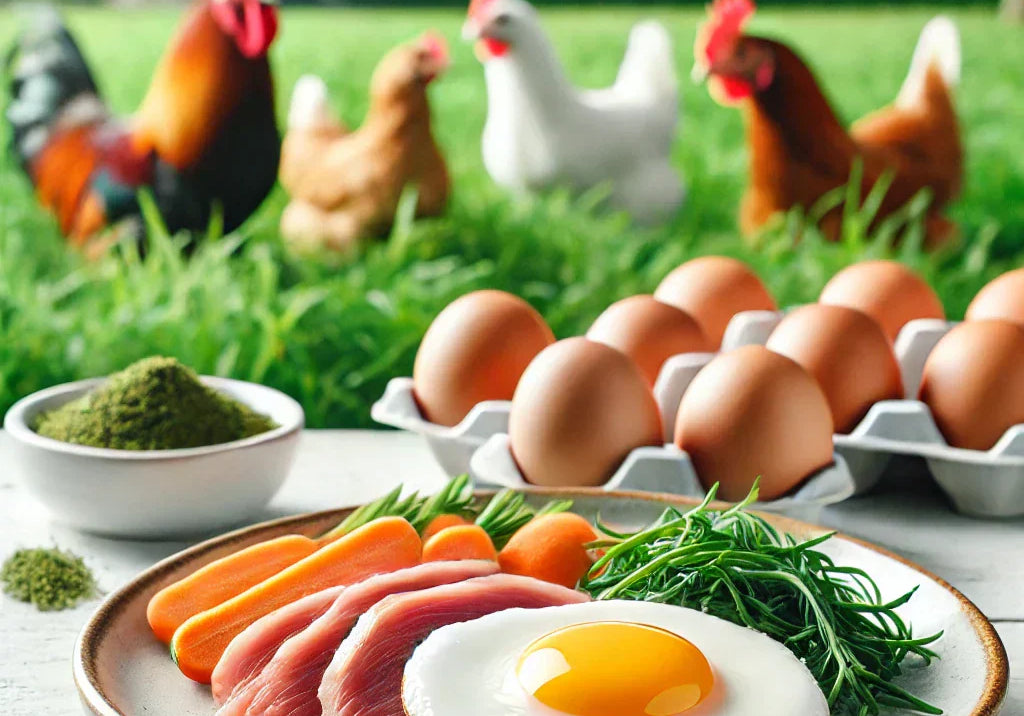Why the choice of meat type is important
With BARF, muscle meat makes up the largest portion of the ration – usually around 80%. It's not just about filling the bowl, but also providing the animal with high-quality protein, vitamins, minerals, and – depending on the type – valuable fats. And: Not every animal tolerates every type equally well.
The most common types of meat at a glance
🐂 Beef – the classic
Advantages:
- Ready to be used in a variety of ways
- Relatively lean, depending on the cut
- Well-tolerated by most dogs
Special features:
Beef is considered a nutrient-rich and stable source of meat with a balanced ratio of protein, fat, and minerals. Its high iron and zinc content is particularly noteworthy, which is especially important for active dogs or those in the growth phase. Its taste is also generally well-received.
🐖 Pork – never feed raw
Why?
Eating raw pork is dangerous for dogs (and cats) – especially because of the Aujeszky virus (pseudorabies), which is usually fatal. The virus is not destroyed by an enzyme in raw meat and attacks the central nervous system. There is no vaccination.
Conclusion:
Raw pork has no place in a bowl – even if it comes from a trustworthy source. Cooked, it can occasionally be given as a treat – but it's not necessary.
🐓 Chicken – light and digestible
Advantages:
- Very lean, easily digestible
- Ideal diet meat for those overweight or with sensitive stomachs
- Generally well-accepted, even by cats
Special features:
Chicken is one of the most easily digestible meats and is therefore particularly suitable for sensitive animals, puppies, or seniors. Its low fat content also makes it a popular choice for diets. Its neutral flavor makes it very popular with many animals – even picky pets.
🦃 Turkey – the underrated diet meat
Advantages:
- Lean, easily digestible
- Good alternative for beef intolerance
- Turkey is particularly suitable for skin or coat problems
Note:
Also available as turkey necks (for beef content) – important: always feed raw and never cooked.
🐑 Lamb – hearty and nutritious
Advantages:
- Slightly fattier, therefore good for active or lean animals
- Less common in conventional feeds – good for elimination diets
- Warming meat according to TCM
Caution:
Not every animal tolerates lamb right away – here too, introduce it slowly.
🐇 Rabbit – tender and hypoallergenic
Advantages:
- Very lean and fine-fibered
- Ideal for food allergies
- Loved by cats
Special features:
Rabbit provides valuable amino acids, but is often more expensive and not available everywhere in BARF quality.
🐴 Horse – for allergy sufferers and sensitive dogs
Advantages:
- Good for food intolerances
- Little allergenic potential
- Strong flavor, often well-accepted
Note:
Horse meat is a valuable source of protein – especially for dogs who can barely tolerate anything else. But that's precisely why it shouldn't be fed lightly or as a change. Horse meat is difficult to obtain and is only available in limited quantities in many regions. It makes sense to reserve this rare protein source for exclusion diets or for animals with severe allergies, so that they still have a tolerable option if necessary. Those who tolerate other varieties well should use it if possible.
🦌 Game – natural and hearty
Advantages:
- Very natural and authentic
- Usually low in fat and high in protein
- Variety for healthy, adult dogs
Special features:
Game meat such as venison or deer in BARF diets often comes from sustainable breeding and impresses with its high nutrient density. The flavor is robust, the meat is easily digestible – an exciting change for dogs with robust digestions. Game also provides high-quality protein, iron, and important trace elements, while the fat content usually remains low.
Which type of meat is best for whom?
🐶 Puppies: Beef, chicken, turkey – low in fat, easily digestible
🐶 Allergy sufferers: Horse, rabbit, possibly goat
🐶 Athletic dogs: Lamb, beef with a high fat content
🐱 Cats: Chicken, rabbit, beef – all rather fine-grained
🐶 Overweight dogs: Turkey, chicken, rabbit – lean & high in protein
Variety? Yes, please—but systematically!
The type of meat can and should be varied! A varied diet throughout the year not only provides variety, but also ensures that there are no excesses or deficiencies of certain nutrients. Rotating between red meat (e.g., beef, lamb) and white meat (e.g., chicken, rabbit) is particularly useful.
Important:
Even if variety is desired, we recommend not feeding all available protein sources at once. It makes sense to deliberately exclude one or two types of meat – for example, horse or rabbit. Why? If your pet develops an allergy or intolerance at some point, this leaves alternative, uncontaminated protein sources to switch to. Preventive thinking that can be very helpful if the worst comes to the worst.
My personal tip:
Variety is great – but it should be a conscious choice. You don't have to try every available type of meat; feel free to stick with a few tried-and-true favorites. Quality and tolerance always come first. If you've found two or three varieties that your pet tolerates well, that's already a great starting point.
And remember: Your dog (or cat) doesn't need something new in their bowl every day. A smart selection, regularly rotated, ensures a balanced diet – completely stress-free. Trust in nature, a good gut feeling, and a keen eye on your pet are often the best advisors.


